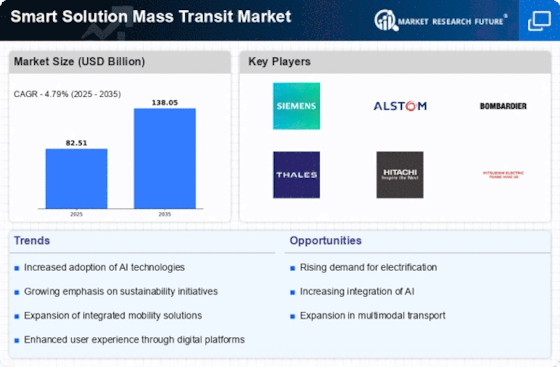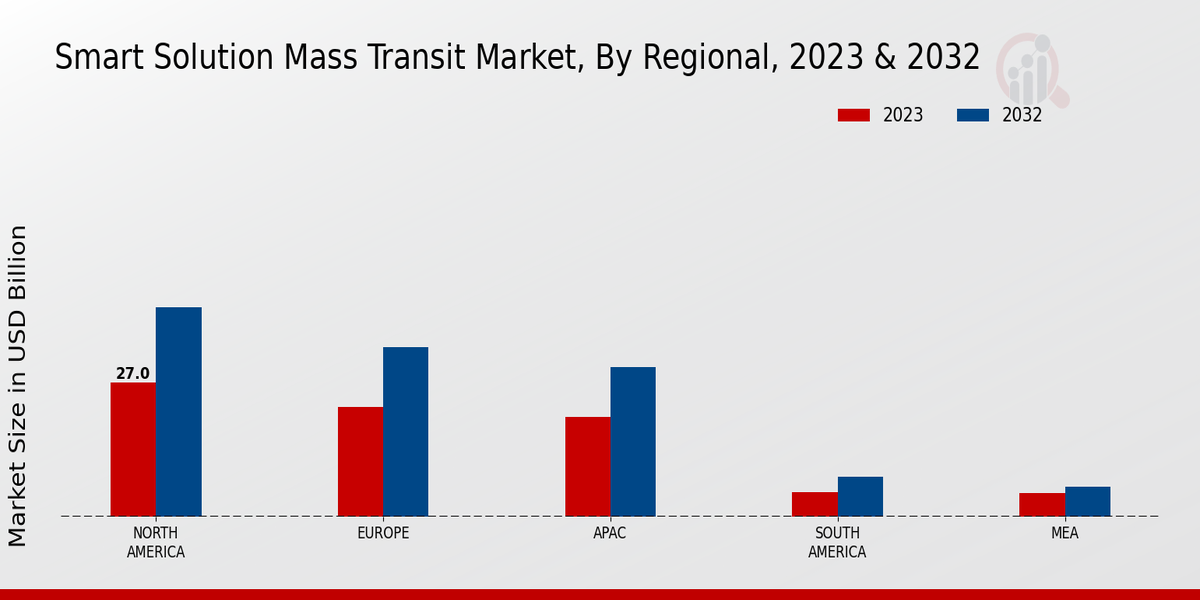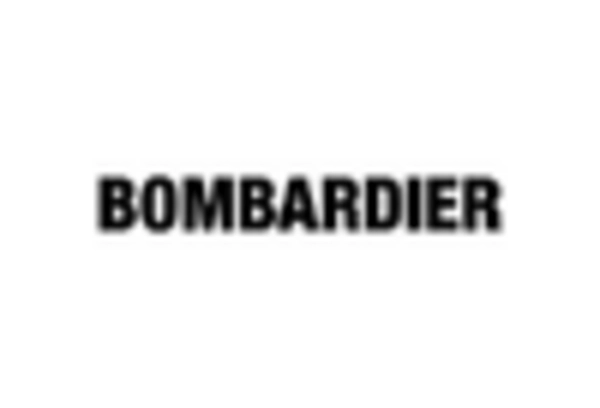User-Centric Design
User-centric design is increasingly influencing the Smart Solution Mass Transit Market, as transit authorities recognize the importance of enhancing the passenger experience. This approach involves designing services and systems that prioritize user needs, such as accessibility, convenience, and comfort. For example, the introduction of mobile applications for ticketing and real-time updates has transformed how passengers interact with transit systems. Data indicates that user satisfaction ratings have improved by 30 percent in systems that have adopted these design principles. By focusing on user experience, transit authorities can foster greater ridership and loyalty, ultimately contributing to the overall success of the Smart Solution Mass Transit Market.
Sustainability Initiatives
Sustainability initiatives are becoming increasingly pivotal within the Smart Solution Mass Transit Market. As urban areas grapple with pollution and congestion, transit authorities are prioritizing eco-friendly solutions. The shift towards electric and hybrid vehicles is a prime example, with many cities aiming for a 50 percent reduction in carbon emissions by 2030. Furthermore, the implementation of smart energy management systems can optimize energy consumption, thereby reducing operational costs. Recent statistics suggest that investments in sustainable transit solutions could reach upwards of 100 billion dollars by 2027, reflecting a significant commitment to environmental stewardship. This trend not only addresses ecological concerns but also enhances the public image of transit systems.
Government Support and Funding
Government support and funding play a crucial role in the development of the Smart Solution Mass Transit Market. Various governments are recognizing the need for modernized transit systems and are allocating substantial budgets to support infrastructure improvements and technology adoption. For instance, recent initiatives have seen funding increases of up to 40 percent for smart transit projects, aimed at enhancing efficiency and sustainability. This financial backing not only facilitates the implementation of innovative solutions but also encourages public-private partnerships, which can further accelerate advancements in mass transit. The ongoing commitment from governments worldwide is likely to bolster the growth trajectory of the Smart Solution Mass Transit Market.
Urbanization and Population Growth
Urbanization and population growth are driving forces behind the Smart Solution Mass Transit Market. As urban populations continue to swell, the demand for efficient and reliable mass transit solutions intensifies. Cities are increasingly investing in smart transit systems to accommodate this growth, with projections indicating that urban areas will house over 70 percent of the global population by 2050. This demographic shift necessitates the development of integrated transit networks that can handle increased passenger volumes while minimizing congestion. The Smart Solution Mass Transit Market is poised to benefit from this trend, as cities seek innovative solutions to enhance mobility and connectivity for their residents.
Integration of Advanced Technologies
The Smart Solution Mass Transit Market is experiencing a notable shift towards the integration of advanced technologies such as artificial intelligence, Internet of Things, and big data analytics. These technologies enhance operational efficiency and improve user experience. For instance, AI-driven predictive maintenance can reduce downtime and operational costs, while IoT devices facilitate real-time tracking of vehicles and passengers. According to recent data, the adoption of these technologies is projected to increase by 25 percent over the next five years, indicating a robust trend towards modernization in mass transit systems. This integration not only streamlines operations but also fosters a more responsive transit environment, aligning with the evolving expectations of urban commuters.


















Leave a Comment